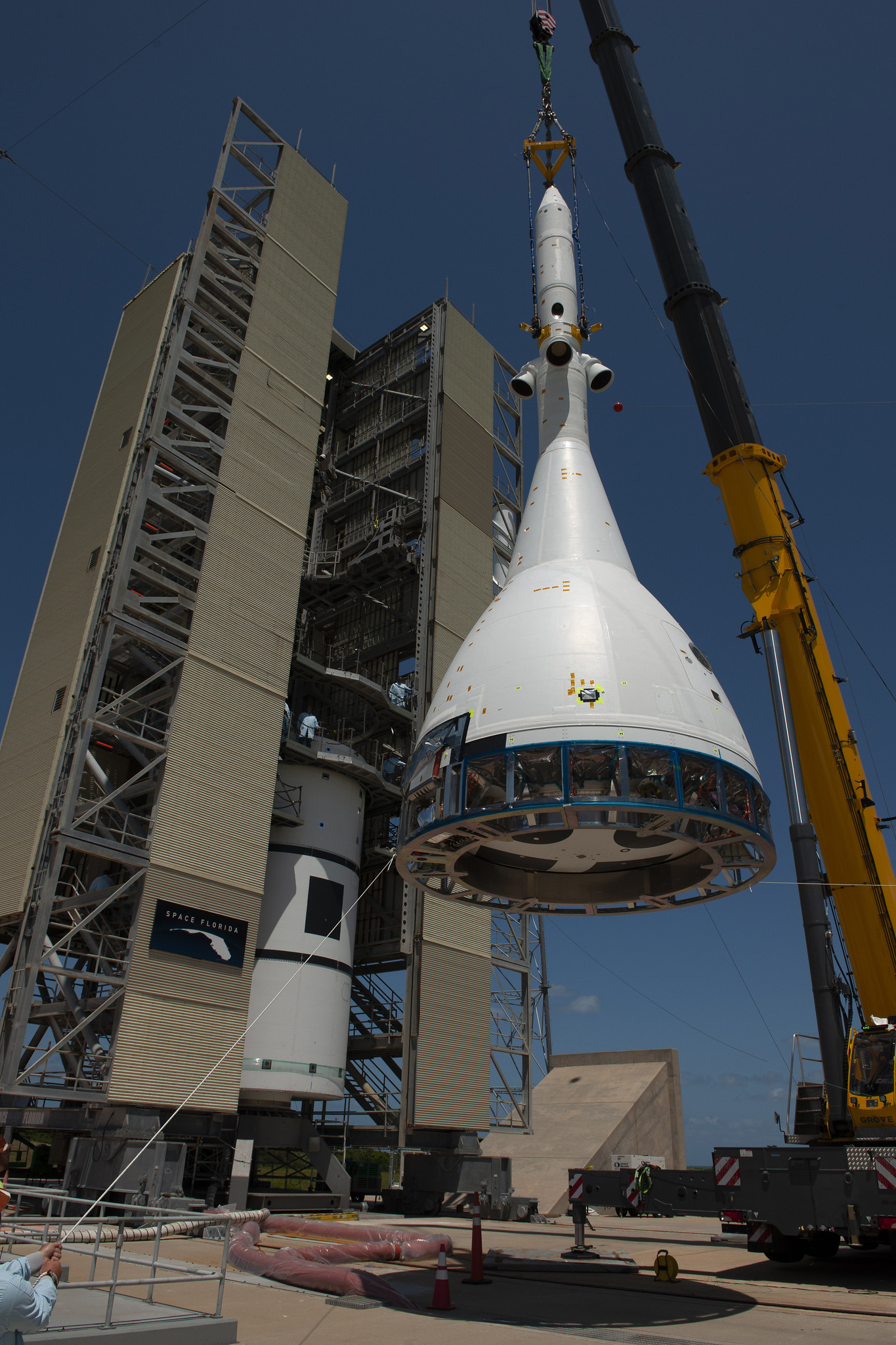NASA Launching Orion Capsule on Crucial Safety Test Tuesday: Watch Live

NASA's next crewed spaceship will perform a crucial safety test tomorrow morning (July 2), and you can watch the action live.
The agency plans to flight-test the Orion capsule's launch-abort system, which is designed to get astronauts to safety in the event of a launch emergency. Orion will lift off a pad at Florida's Cape Canaveral Air Force Station during a four-hour window that opens at 7 a.m. EDT (1100 GMT). You can watch the uncrewed test, known as Ascent Abort-2 (AA-2), live here at Space.com, courtesy of NASA, or directly via the space agency.
It will be brief. If all goes according to plan, Orion's abort motor will fire 55 seconds into flight, when the capsule is about 31,000 feet (9,450 meters) above the ground. The launch-abort system, which sits atop the capsule, will jettison 27 seconds later, and Orion will come back to Earth just 3 minutes after lifting off.
Related: Orion Explained: NASA's Multi-Purpose Crew Vehicle (Infographic)
The capsule will make a hard splashdown in the Atlantic Ocean, hitting the water at about 300 mph (500 km/h), NASA officials have said. Orion likely won't survive the impact intact, and it's expected to sink to the ocean floor regardless. (The test version of Orion going up tomorrow does not feature parachutes or an attitude-control system.)
The main goals are to prove out the abort system in flight, and to gather reams of data about the maneuver and the conditions experienced by the capsule in its aftermath.
Orion will be NASA's first crew-carrying vehicle since the space shuttle, which was retired in 2011. Whereas the shuttle stayed in Earth orbit, however, Orion will help take astronauts much farther afield — to the moon and Mars.
Breaking space news, the latest updates on rocket launches, skywatching events and more!
Orion will eventually launch atop a huge rocket called the Space Launch System (SLS), which is still in development. (The first flight test of SLS, which will carry an uncrewed Orion around the moon, is scheduled for next summer, and the first crewed flight with the duo is targeted for 2022.) But tomorrow's test will employ a rocket provided by aerospace company Northrop Grumman.
As its name suggests, AA-2 was the second test of the Orion abort system. The first came in May 2010, when Orion demonstrated a launchpad escape at White Sands Missile Range in New Mexico.
The weather looks good for AA-2; there's just a 20% chance that Mother Nature will foil tomorrow's attempt, NASA officials said.
There's more webcast action later in the day tomorrow as well; a total solar eclipse will darken skies over Chile and Argentina in the afternoon. You can catch livestreams of that epic event here at Space.com, beginning at 3 p.m. EDT (1900 GMT).
- Orion Spacecraft: Taking Astronauts Beyond Earth Orbit
- NASA's 1st Orion Spacecraft Test Flight in Photos
- Space Launch System: NASA's Giant Rocket Explained (Infographic)
Mike Wall's book about the search for alien life, "Out There" (Grand Central Publishing, 2018; illustrated by Karl Tate), is out now. Follow him on Twitter @michaeldwall. Follow us on Twitter @Spacedotcom or Facebook.

Michael Wall is a Senior Space Writer with Space.com and joined the team in 2010. He primarily covers exoplanets, spaceflight and military space, but has been known to dabble in the space art beat. His book about the search for alien life, "Out There," was published on Nov. 13, 2018. Before becoming a science writer, Michael worked as a herpetologist and wildlife biologist. He has a Ph.D. in evolutionary biology from the University of Sydney, Australia, a bachelor's degree from the University of Arizona, and a graduate certificate in science writing from the University of California, Santa Cruz. To find out what his latest project is, you can follow Michael on Twitter.
